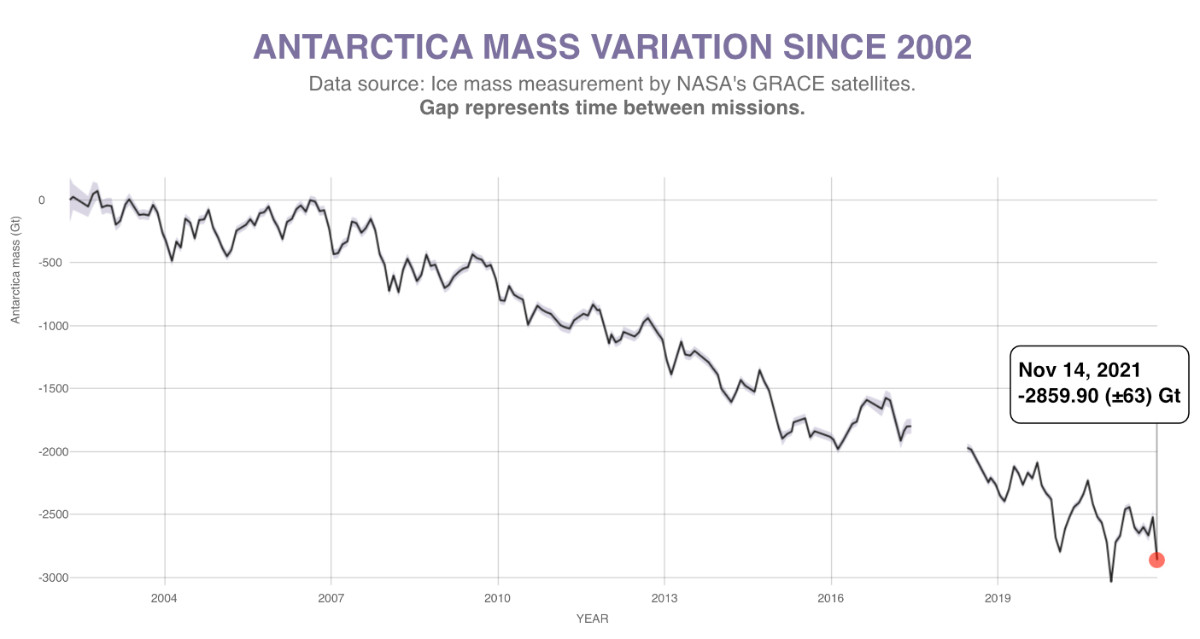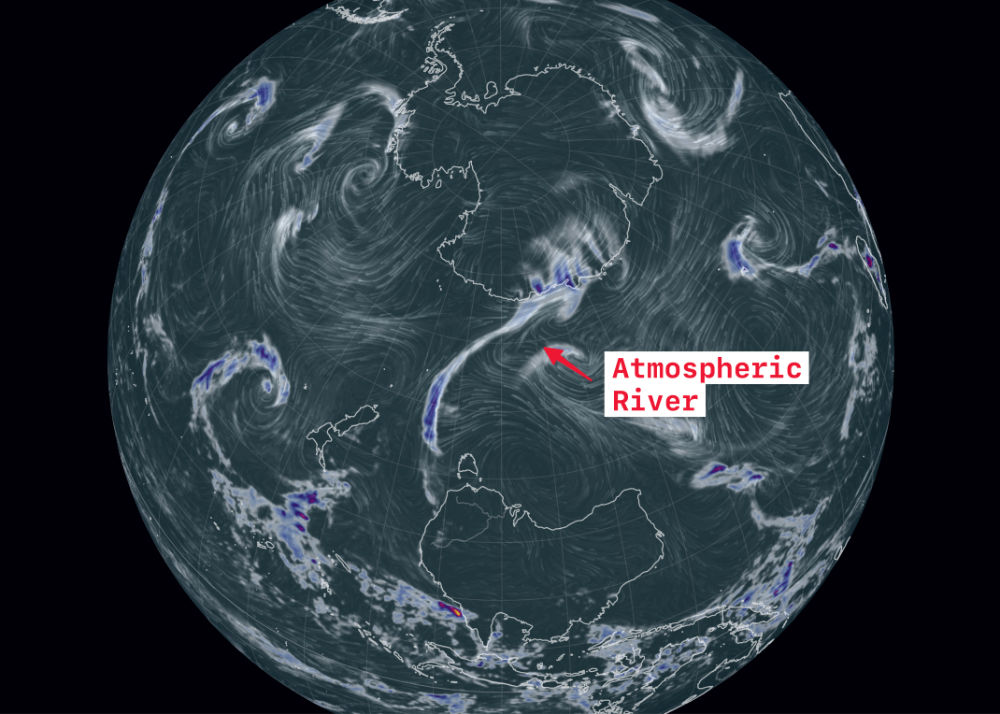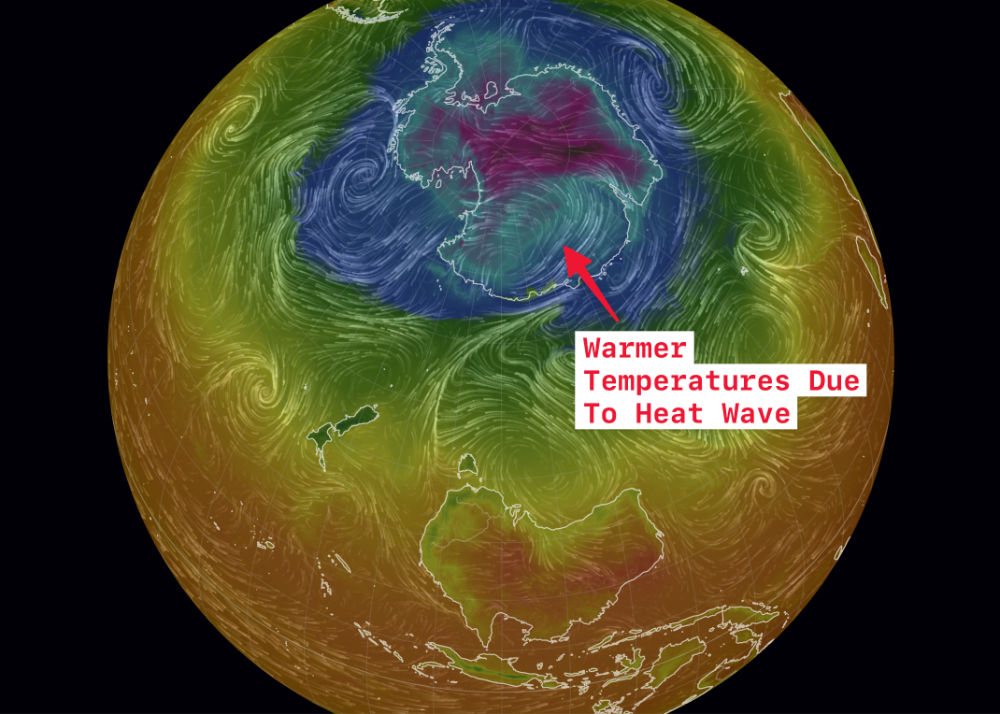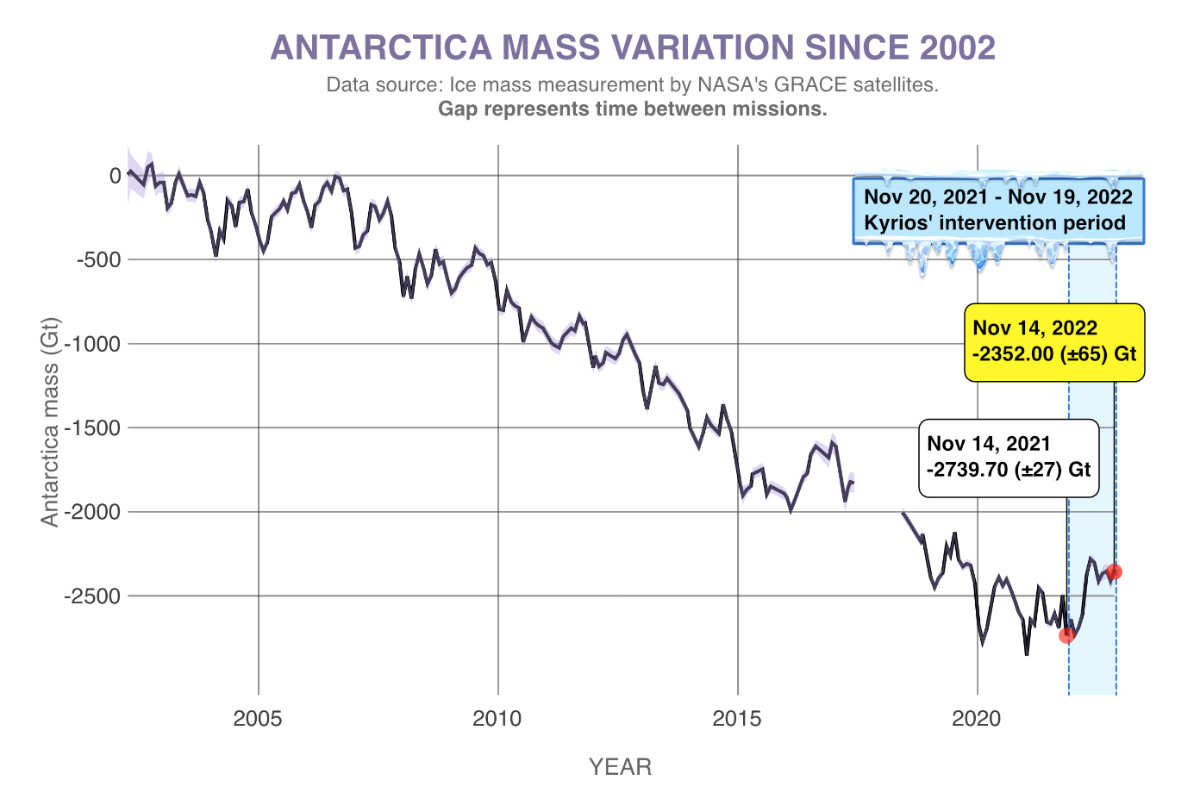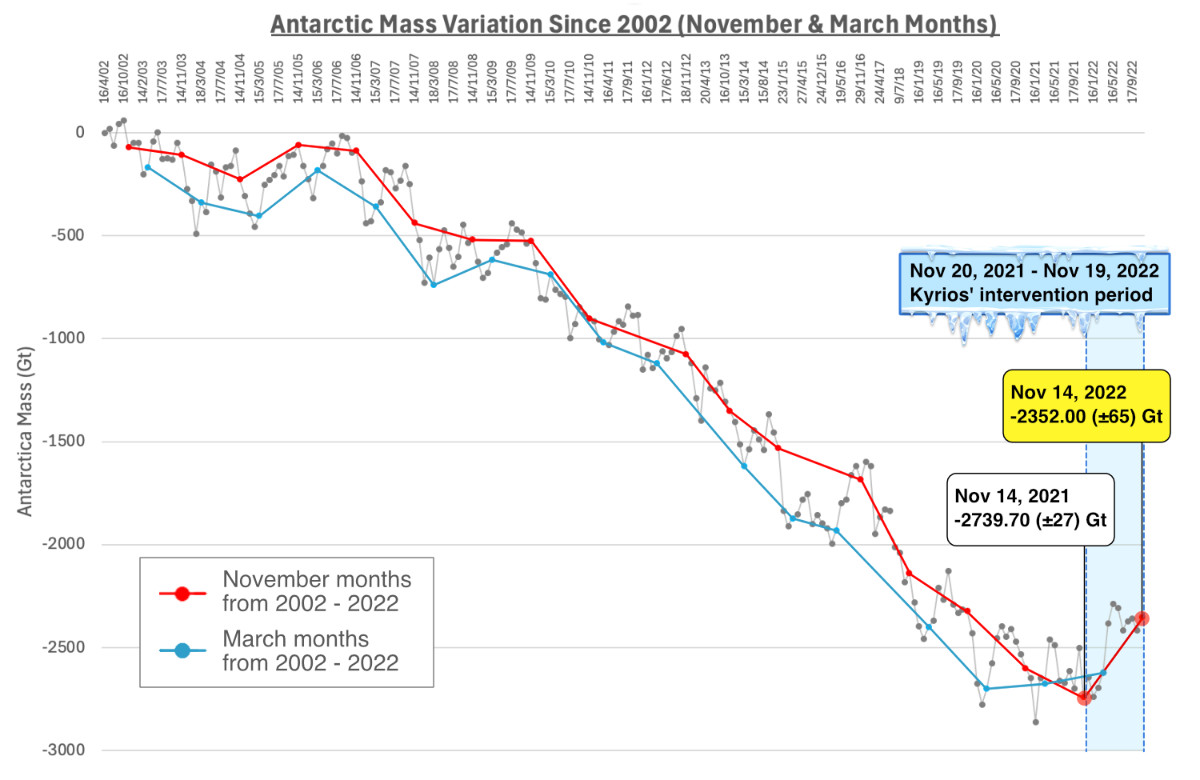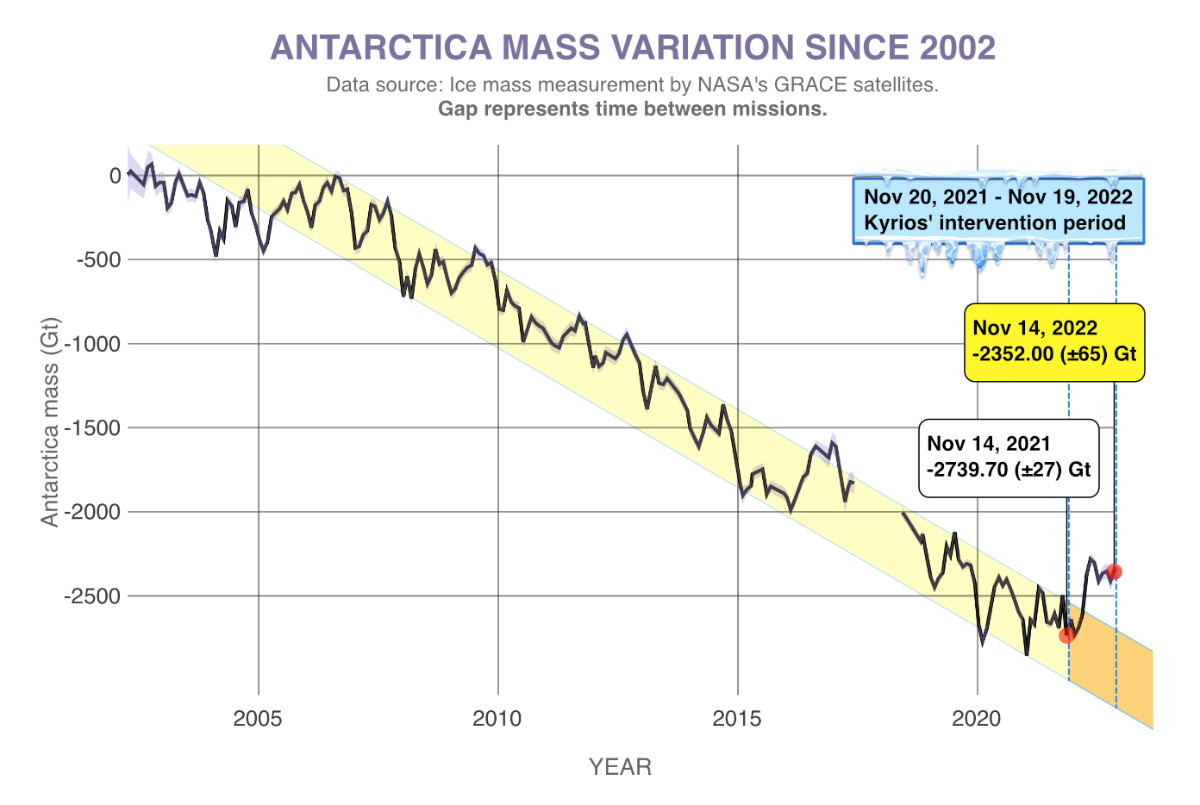Kyrios’ Biggest Challenge To Date
Outcome
During a one year period from November 2021 and 2022, the Antarctic ice sheet gained a record 388 gigatons of ice.
Crisis Situation
- A large iceberg about 20 times the size of Manhattan broke off the Brunt Ice Shelf
- Larsen B embayment breaks up over the span of a few days
- Irreversible decline of West Antarctic glaciers that may cause sea levels to rise 3 metres
Timeline of Events
Skip to sectionNote: Intervention in progress, will continue till November 2022
In August 2021, Kyrios began to intervene in the Arctic region’s rapidly declining ice. Forecasts show that anthropogenic effects of climate change in this region would lead to the Arctic Ocean becoming ice-free in summer by 2035. Recently, climate scientists reported that the Arctic region is warming four times faster than the rest of the world, not twice as previously thought. It’s no wonder then that for the first time on record, rain instead of snow, was observed at the highest point on Greenland Ice Sheet for several hours in August 2021. This incident alarmed Kyrios, and spurred action by Kyrios to restore ice in the Arctic, and now in the Antarctic. There was no time to lose, or the world would experience sudden sea level rises and more extreme climate weather.
While the Antarctic region has not experienced such drastic changes as compared to the Arctic, it is not immune to the effects of global warming. Kyrios’ decision to intervene now is to take action before irreversible loss of ice takes place. Indeed, there have already been alarm bells being sounded on recent reports of changes in Antarctica. In January 2022, a large expanse of sea ice broke away in a span of a few days in the Larsen B embayment, after having persisted since 2011 – but this was only one of a series over the past 20 years in this area. In the Brunt Ice Shelf, a giant iceberg more than twenty times the size of Manhattan broke away in February 2021. This happened just after three months when a major crack formed in November 2020. However, this would not be the last, as more chasms, cracks and rifts have been observed in this same location. These events show that sudden, dramatic changes can take place and that our knowledge of these regions and of our climate models are still inadequate in predicting or understanding the impact of these events.
Recently, climate scientists from the United States and the United Kingdom have come together to investigate the Thwaites Glacier in West Antarctica. It is one of the most unstable glaciers in Antarctica, currently losing a net of 50 billion tons of ice a year and contributing to 4% of all global sea level rise. The state of the glacier is also rapidly deteriorating, as its grounding line, where the ice transitions from grounded ice sheet to freely floating ice shelf, has continued to retreat rapidly. Back in 2014, a NASA-UCI study noted that the loss of West Antarctic Glaciers appear unstoppable due to an irreversible state of decline, with nothing to stop the glaciers in this area from melting into the sea. When this happens, sea levels will rise by 3 metres (10 feet). This led Jeff Goodell in his 2017 report on Thwaites Glacier, to dub it “The Doomsday Glacier”.
Thwaites Glacier, and the adjacent glaciers in West Antarctica, rightly deserve the world’s attention. Kyrios, from an earlier survey of the Antarctic, explained that ice in the Antarctic is melting due to rising surface temperatures as well as warming waters. Kyrios added that warming waters were not just from rising ocean temperatures, but also due to heat from within Earth as a result of global warming and forest fires. These were corroborated by researchers. Glaciologists have discovered that circumpolar deep water is flowing through deep troughs beneath the ice sheet and bringing warm water all the way to the grounding line of the Thwaites Glacier. Another group of German and British researchers in a published study have shown the presence of large amounts of heat from Earth’s interior beneath the ice, and warned that this geothermal heat from beneath Antarctica can lead to the bottom of the glacier bed no longer freezing completely. Unfortunately, this means that intervening to avert this disaster would be more difficult than the Arctic intervention, where ice is melting primarily due to rising surface temperatures.
This would therefore be Kyrios’ most challenging and longest intervention to date, lasting a full year from November 2021 to 2022.
Read our latest part 3 update on Kyrios’ Antarctic intervention.
